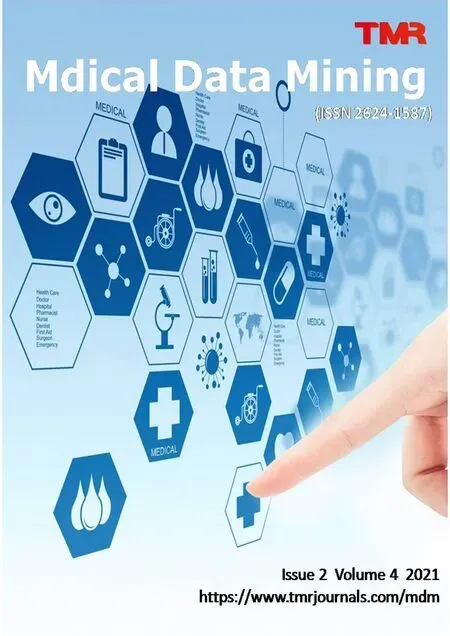Herbal medicine prescribing patterns from contemporary famous old TCM doctors for treating coronary heart disease:an analysis based on data mining
Yong Chen,Jie Wang,Tong Yang,De-Ying He,Yi Ren
1Chongqing Traditional Chinese Medicine Hospital,Chongqing 400021,China.
Background:To analyze the herbal medicine prescribing patterns of contemporary famous old traditional Chinese medicine doctors in treating coronary heart disease,based on data mining technology,so as to provide useful insights into the clinical practice.Methods: Databases,including Medline (January 1966 to December 2019),Wanfang(January 1982 to December 2019),VIP Database (January 1989 to December 2019),CNKI (January 1979 to December 2019),CBMdisc (January 1978 to December 2019),and Classic Case Collection from Contemporary Famous Old Traditional Chinese Medicine Doctors were searched,and 224 eligible studies involving 416 patients were entered into the case study database after data processing.Frequency analysis and association rule analysis were used to investigate the prescribing patterns of contemporary famous old traditional Chinese medicine doctors in treating coronary heart disease.Results: In total 290 kinds of Chinese herbal drugs and 19 core drugs were used in the cases studied.The most commonly used categories were “Qi-Tonifying Drugs”,“Blood-Activating Drugs”,and “Phlegm-Eliminating Drugs”.The association rule analysis identified 14 commonly used herbal pairs,19 three-drug combinations,and 1 four-drug combination.Conclusion: Contemporary famous old traditional Chinese medicine doctors considered warming heart yang as an extremely important approach to treat coronary heart disease based on Zhang Zhongjing’s treatment for chest painful obstruction caused by “Inactivity of Chest Yang” (blockade of phlegm turbidity).Both symptoms and root causes were addressed in the formulas prescribed by these doctors. “Tonifying Qi,Nourishing Yin,Activating Blood,and Eliminating Phlegm” were the most commonly used therapeutic methods for patients with coronary heart disease.
Key words: Association rule analysis,Coronary heart disease,Old traditional Chinese medicine doctors,Prescribing patterns
Background
Coronary heart disease (CHD) is the most common type of heart disease posing a serious threat to human health.According to the 2016 statistics,cardiovascular disease was the leading cause of death in China,accounting for 42.61% and 45.01% of all deaths in Chinese urban and rural areas,respectively.Cardiovascular disease is creating a major public health threat with its growing burden,demanding an immediate and effective action[1,2].Western medicine has made great progress in treating CHD,especially the development of coronary intervention,but it has some limitations [3–6].Traditional Chinese medicine (TCM),with its multipathway,multilevel,and multitarget approaches,has shown unique advantages and great potential in treating CHD [7–10].The precious experiences of famous TCM doctors are an important carrier of TCM knowledge,and analyzing and summarizing their experiences are important to provide insights into the clinical practice.This study aimed to investigate the prescribing patterns of contemporary famous old TCM doctors in treating CHD,based on data mining technology.
Materials and methods
Study design
This was a retrospective review of studies on the prescribing patterns of herbal medicine by contemporary famous old TCM doctors in treating patients with CHD.Studies before December 2019 were included in this review.All analyses were based on previous published studies,thus no ethical approval and patient consent are required.
Diagnostic criteria
CHD was diagnosed in accordance withNomenclature andCriteriaforDiagnosisofIschemicHeartDisease,a report jointly issued by the International Society and Federation of Cardiology/World Health Organization Task Force on Standardization of Clinical Nomenclature in 1979 [11].The TCM syndrome was defined according to theTCMSyndromeDifferentiation CriteriaforCoronaryHeartDisease,issued by the Cardiovascular Disease Branch of China Society of Integrated Traditional Chinese and Western Medicine(revised in 1990) [12].
Inclusion criteria
The inclusion criteria were as follows:(1) patients meeting the diagnostic criteria of CHD;(2) complete medical records that specified the prescribed formulas and herbal drugs;(3) treatments aimed at CHD;and (4)cases provided by famous TCM doctors,defined as TCM experts with the title of associate chief physician or above granted by national,provincial/municipality/autonomous regional or municipal government.
Exclusion criteria
The exclusion criteria were as follows:(1) discussions on the academic theories of famous TCM doctors,without any case studies;and (2) clinical trials of Chinese patent medicines or formulas,without the reporting of any specific cases.
Search strategy
Several mainstream databases were searched,including Medline (from January 1966 to December 2019),Wanfang Database (from January 1982 to December 2019),VIP Database (from January 1989 to December 2019),CNKI (from January 1979 to December 2019),and CBMdisc (from January 1978 to December 2019).Using title,subject terms,and key words as the search criteria,the following search strategy was applied:coronary heart disease OR coronary atherosclerotic heart disease OR angina pectoris OR myocardial infarction OR cardiac pain OR chest painful obstruction OR acute coronary syndrome AND TCM doctor.The retrieved studies and cases,together with cases from the chapters of chest painful obstruction and cardiac pain in the book ofClassicCaseCollectionfromContemporary FamousOldTCMDoctors[13],were used as the data source.Abstracts and titles of related studies were initially scanned by a reviewer.Potentially relevant articles were then considered by at least two independent reviewers.Disagreements were resolved by discussion or upon consensus from a third or fourth reviewer.
Data entry and processing
The IBM SPSS MODELER 14.1 data mining software was used to create an information database.Data,including the title and source of studies,year of publication,name of doctors,and prescribed formulas and drugs,were entered into the database.Data entry was performed independently by 2 investigators to double-check.All data were processed using uniform standards;the names of herbal drugs were standardized according to the seventh edition ofChinese MateriaMedicauniversity textbook [14].For example,the name of “Yimi” or “Yiren” was standardized as “Yiyiren (Semencoicis)”,“Xuanhu” or “Yuanhu” as “Yanhusuo (Rhizomacorydalis)”,“Longmu” as “Longgu (OsDraconis)” plus “Muli (Conchaostreae)”,and “Jiaosanxian” as “Fried grist (Hordeumvulgare)” plus “Fried hawthorn (Crataeguspinnatifida)” plus “Fried Shenqu (Massafermentata).”
Statistical analysis
A sorted list by the frequency of use of each herbal drug in a descending order was automatically generated using the IBM SPSS MODELER 14.1 software.Lists sorted by the frequency of use of drug combinations(two-,three-,or four-drug combinations) in a descending order were also obtained to analyze the patterns of formulating multiherb prescriptions.The Apriori algorithm was used for association rule analysis;by defining different support and confidence values,drug combinations with strong association rules were identified after filtration and pruning.
Results
Literature source
A total of 786 full-text studies were retrieved.After excluding 133 duplicate studies across these databases and 482 according to the inclusion and exclusion criteria,171 articles (69 articles from Wanfang Database,58 from VIP Database,and 44 from CNKI)were considered eligible for inclusion in the present study (Figure 1).Of the studies,13 were published in core journals,90 in statistical source journals,and 68 in other journals.Together with the 53 articles from the bookClassicCaseCollectionfromContemporaryFamousOldTCMDoctors,a total of 224 articles were included in this study.Some studies reported only one case,while others described at least two cases.Finally,416 cases were included for analysis.In terms of the year of publication,three studies were published in the 1980s,14 in the 1990s,97 in the 2000s,and 110 in 2010–2019.
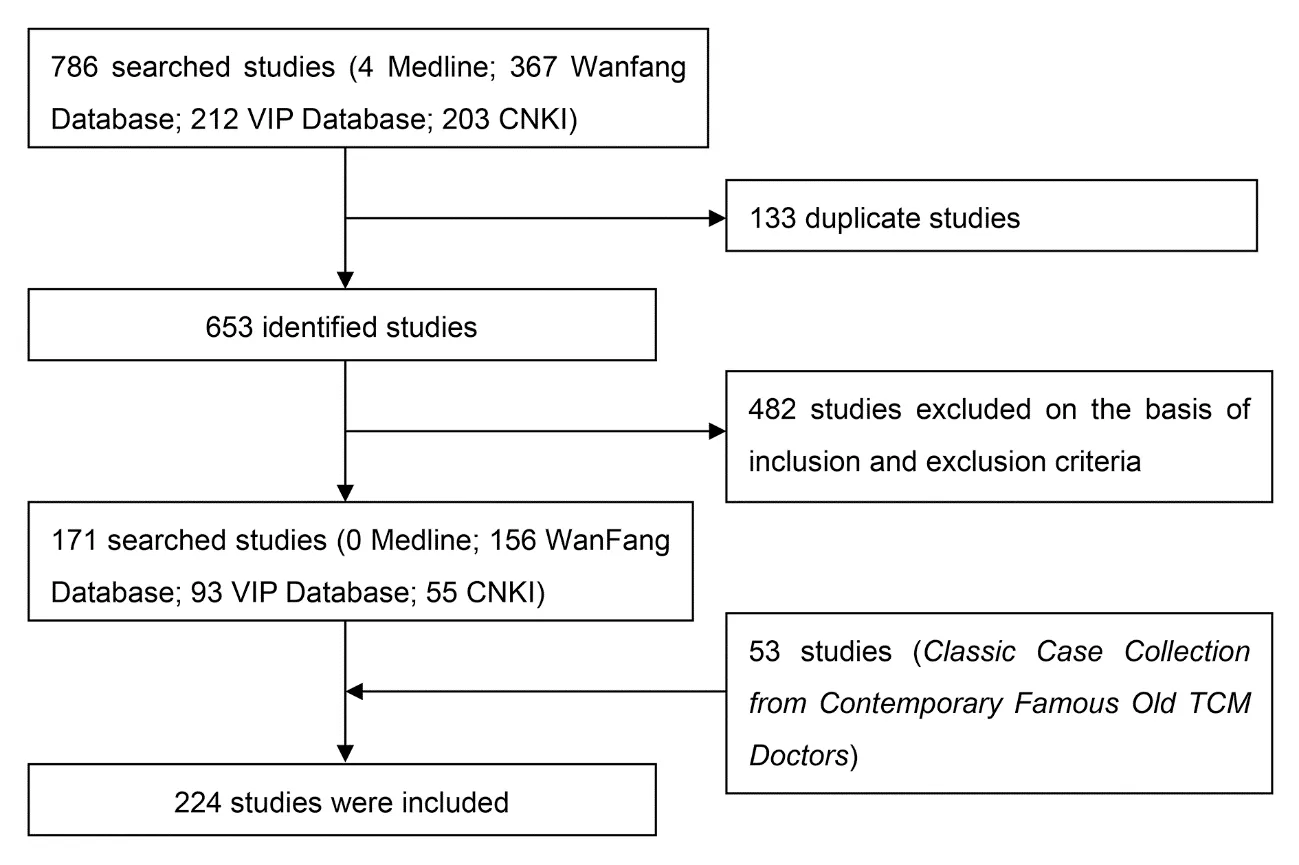
Figure 1 Flow diagram of the article-selection process
Frequency of use of herbal drugs
A total of 290 kinds of Chinese herbal drugs were used in the included cases,with an overall frequency of 5,402.Nineteen core drugs,defined as those used in at least 20% of the included cases,were identified,with an overall frequency of use of 2640.The top 3 most commonly used categories were qi-tonifying drugs,blood-activating drugs,and phlegm-eliminating drugs(Table 1).
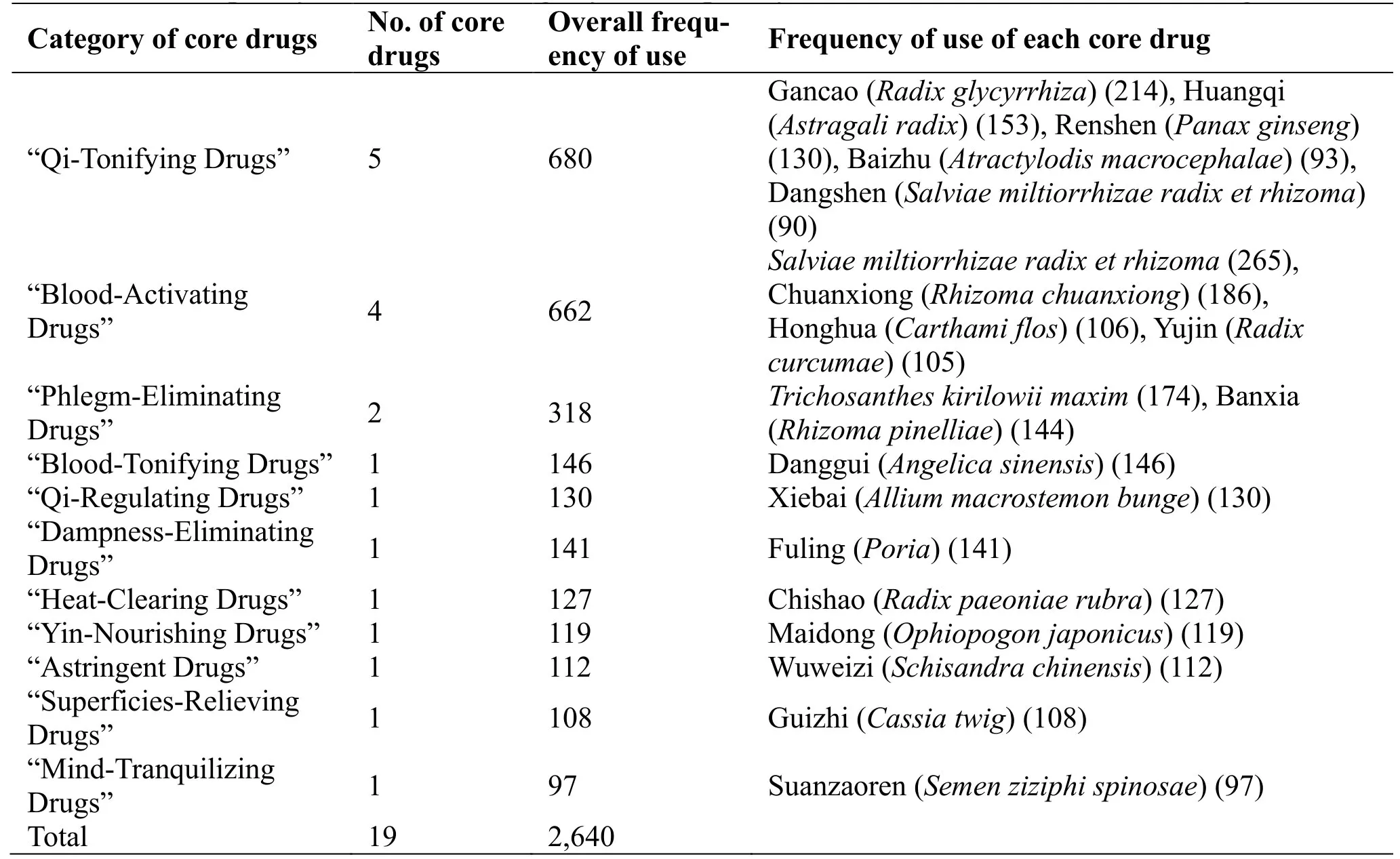
Table 1 FrequencyofuseofcoredrugsbycontemporaryfamousoldTCMdoctorsintreatingCHD
Patterns of formulating multiherb prescriptions
When the support level was set at 20% and the confidence at 0.95,14 herbal pairs (2-drug combinations) were observed,and the top 5 herbal pairs ranked by frequency of use were “Salviaemiltiorrhizae radixetrhizoma-Radixglycyrrhiza”,“Salviae miltiorrhizaeradixetrhizoma-Gualou (Trichosanthis fructus)”,“Salviaemiltiorrhizaeradixetrhizoma-Rhizomachuanxiong”,“Trichosanthisfructus-Xiebai(Alliimacrostemonisbulbus)”,and “Astragaliradix-Salviaemiltiorrhizaeradixetrhizoma” (Table 2).
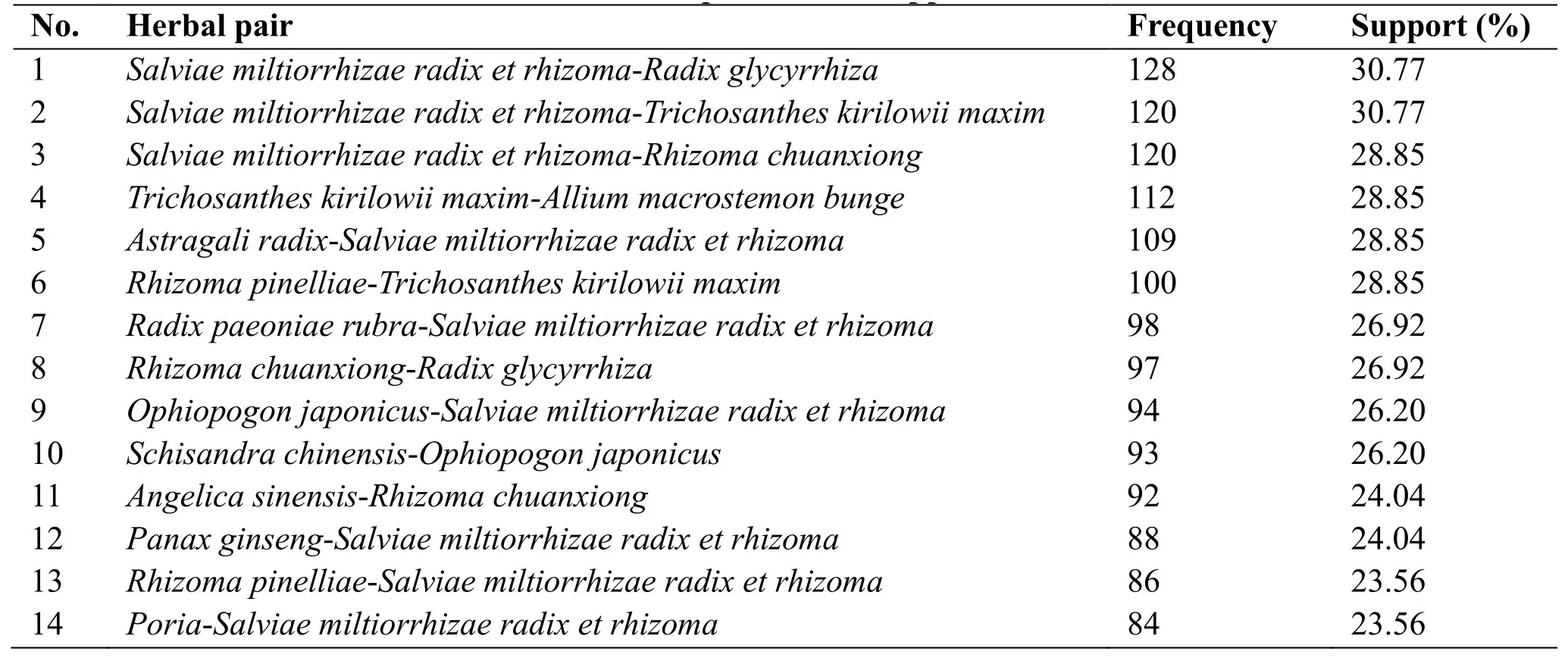
Table 2 Herbalpairswithasupport≥20%
When the support level was set at 10% and the confidence at 0.95,19 three-drug combinations were observed,and the top 3 ranked by frequency of use were “Trichosanthisfructus-Alliimacrostemonisbulbus-Rhizomapinelliae”,“Salviaemiltiorrhizaeradixet rhizoma-Alliimacrostemonisbulbus-Trichosanthis fructus”,and “Salviaemiltiorrhizaeradixetrhizoma-Schisandrachinensis-Ophiopogonjaponicus” ;one 4-drug combination was also identified,which was “Salviaemiltiorrhizaeradixetrhizoma-Rhizoma pinelliae-Alliimacrostemonisbulbus-Trichosanthis fructus” (Table 3).

Table 3 Three-or4-drugcombinationswithasupport≥10%
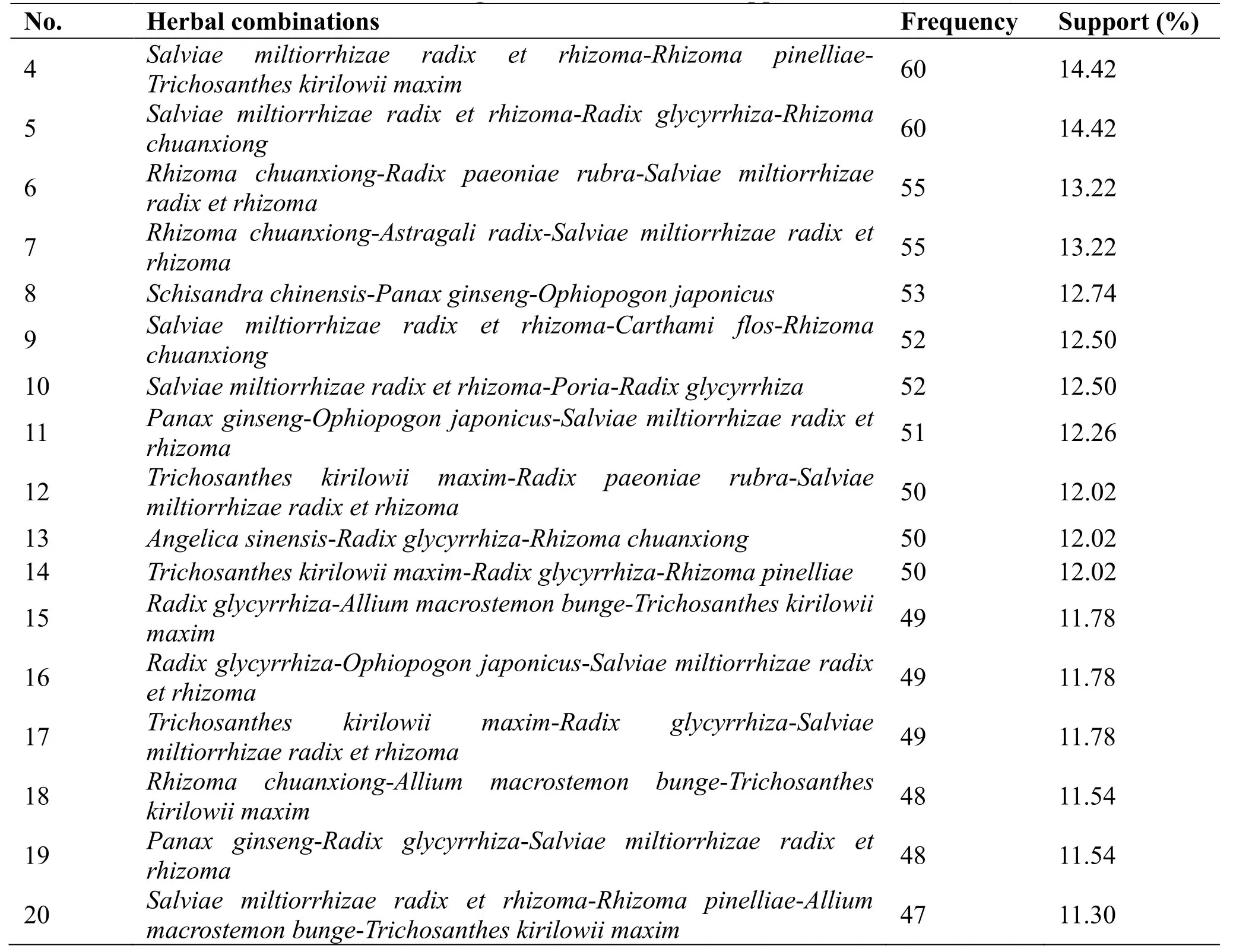
Table3 Three-or4-drugcombinationswithasupport≥10% (contibued)
Association rules
Association rules of herbal pairs or combinations were obtained when the support was set at 20% and the confidence at 0.8 (Table 4).Network graphs were when the support was set at 10% and 20% (the thicker the connection line,the stronger the association rule),respectively(Figures 2,3).generated to exhibit the core pairs or combinations

Table 4 Associationrulesofherbalpairsorcombinations(confidence≥80%)
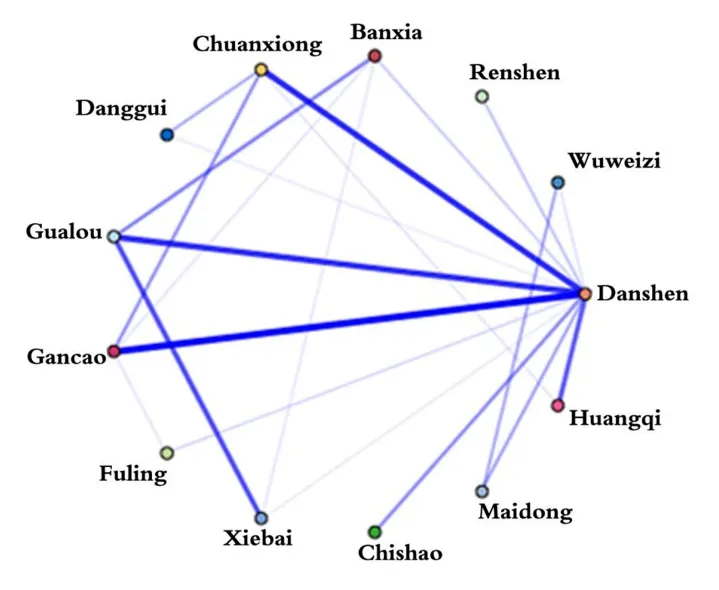
Figure 2 Networkgraphwithasupportsetat10%.
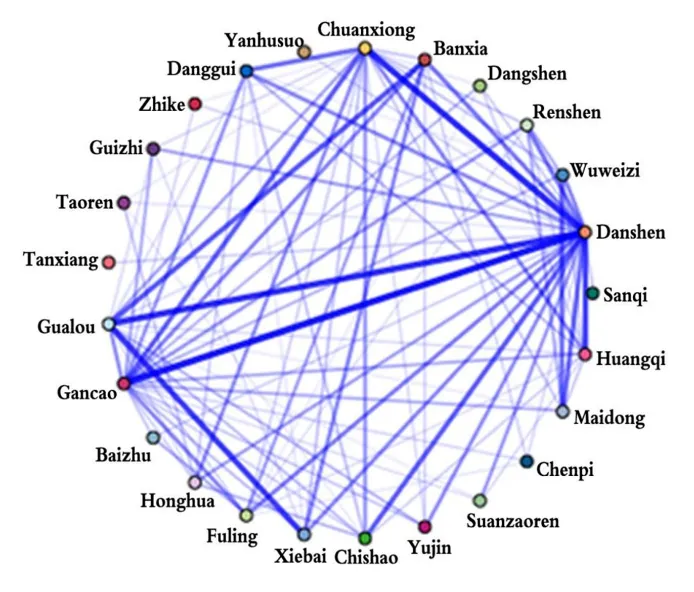
Figure 3 Network graph with a support set at 20%.
Discussion
The frequency analysis showed that 290 kinds of herbal drugs were used in the formulas prescribed by famous TCM doctors in treating CHD.Of these,19 drugs were used in at least 20% of the included cases,with an overall frequency of use of 2,640,indicating that contemporary famous old TCM doctors have some common choices and focus on certain core drugs when treating patients with CHD.Based on the top 3 most commonly used drug categories,the main therapeutic approaches used by these prestigious doctors included “Tonifying Qi,Activating Blood,and Eliminating Phlegm”.This was highly consistent with the findings from previous epidemiological studies that the core syndrome of patients with CHD is “Qi Deficiency and Phlegm-Blood Stasis” [15].Such a consistency highlighted the importance of “Strengthening Healthy Qi and Removing Both Phlegm and Blood Stasis” in the treatment of CHD.
Herbal pairs (combinations),as the basis of the compatibility of TCM prescriptions,are considered crucial in investigating the prescribing patterns of famous TCM doctors and providing insights into the formulation of multiherb prescriptions.Table 2 shows that,of the 14 identified herbal pairs,numbers 1,5,8,and 12 were “Qi-Tonifying and Blood-Activating Pairs” ;numbers 3,7,and 11 were “Blood-Activating and Stasis-Eliminating Pairs”,numbers 2 and 13 were “Blood-Activating and Phlegm-Eliminating Pairs” ;numbers 4,6,and 14 were “Qi-Regulating and Phlegm-Eliminating Pairs” ;and numbers 9 and 10 were “Yin-Nourishing and Blood-Activating Pairs”.Herbal pairs,or two-drug combinations,are relatively fixed combinations frequently used in daily clinical practice.They usually have synergistic effects in increasing efficacy and reducing toxicity.As the minimum unit in TCM prescriptions,herbal pairs reflect the compatibility of multiherb prescriptions,despite its simple composition.The three-drug combination is a unit larger than the herbal pair,composed of three closely related herbal drugs.In the present study,the identified “Trichosanthisfructus-Alliimacrostemonisbulbus-Rhizomapinelliae” combination was exactly the classic ancient prescription Gualou-Xiebai-Banxia decoction from the classic bookEssentialPrescriptions fromtheGoldenCabinet(written by Zhang Zhongjing in 205 C.E.).It is a major formula recommended by Zhang Zhongjing for treating chest painful obstruction;it has the functions of relaxing the chest,“Regulating Qi”,and “Eliminating Dampness and Phlegm”.The occurrence of the three-drug combination “Salviae miltiorrhizaeradixetrhizoma-Alliimacrostemonisbulbus-Trichosanthisfructus” and the 4-drug combination “Salviaemiltiorrhizaeradixetrhizoma-Alliimacrostemonisbulbus-Trichosanthisfructus-Rhizomapinelliae” indicated that these prestigious Danshen,Salviae miltiorrhizae radix et rhizoma;Sanqi,Notoginsengradixetrhizoma;Huangqi,Scutellariae radix;Maidong,Ophiopogonjaponicus;Chenpi,Citri reticulatae pericarpium;Suanzaoren,Ziziphi spinosae semen;Yujin,Radixcurcumae;Chishao,Radix paeoniaerubra;Xiebai,Alliummacrostemonbunge;Fuling,Poria;Honghua,Carthamiflos;Baizhu,Atractylodismacrocephalae;Gancao,Radix glycyrrhiza;Gualou,Trichosanthisfructus;Tanxiang,Santali albi lignum;Taoren,Persicae semen;Guizhi,Cinnamomi ramulus;Zhike,Fructus aurantii;Danggui,Angelicasinensis;Yanhusuo,Rhizomacorydalis;Chuanxiong,Rhizomachuanxiong;Banxia,Rhizoma pinelliae;Dangshen,Salviaemiltiorrhizaeradixet rhizoma;Renshen,Panaxginseng;Wuweizi,Schisandrachinensis.
Danshen,Salviae miltiorrhizae radix et rhizoma;Huangqi,Scutellariae radix;Maidong,Ophiopogon japonicus;Chishao,Radixpaeoniaerubra;Xiebai,Alliummacrostemonbunge;Fuling,Poria;Gancao,Radixglycyrrhiza;Gualou,Trichosanthisfructus;Danggui,Angelicasinensis;Chuanxiong,Rhizoma chuanxiong;Banxia,Rhizomapinelliae;Renshen,Panaxginseng;Wuweizi,Schisandrachinensis.
TCM doctors stressed on the importance of removing both phlegm and blood stasis in the treatment of CHD.The occurrence of the three-drug combination “Salviae miltiorrhizaeradixetrhizoma-Schisandrachinensis-Ophiopogonjaponicus” revealed that these doctors focused not only on “Activating the Blood and Eliminating Stasis” but also on “Tonifying Qi and Nourishing Yin”.Out of the 19 three-drug combinations identified in the present study,13 combinations includedSalviaemiltiorrhizaeradixetrhizoma,reflecting its importance in treating CHD or angina pectoris.Salviaemiltiorrhizaeradixetrhizomais bitter and slightly cold.It covers the “Heart,Pericardium,and Liver Meridians”.It has the functions of “Activating Blood and Eliminating Stasis,Cooling Blood and Clearing Heart Fire,and Nourishing Blood and Tranquilizing Mind”,which can be used in combination with other herbal drug categories.An old saying,“the efficacy of a single drugSalviaemiltiorrhizaeradixet rhizomaequals to that of the classic ancient prescription “Si Wu decoction”,reveals the major role ofSalviae miltiorrhizaeradixetrhizomain “Blood-Activating” and “Stasis-Eliminating” treatment.The “compound Danshen drippling pills”,containingSalviaemiltiorrhizaeradixetrhizoma,Notoginsengradixetrhizoma,and Bingpian (Borneolumsyntheticum),is the most promising TCM candidate to get permission from the Food and Drug Administration in the United States to treat chronic stable angina.Its efficacy has been well established in a number of laboratory and clinical studies [16–18].Chinese herb is used to treat stable angina pectoris as an alternative therapy [19,20].
In the present study,the frequencies of usingNotoginsengradixetrhizomaandBorneolumsyntheticumdid not reach 20% (65 and 2,respectively),and thus they were not included in the frequency analysis.As this study aimed to analyze the herbal drugs rather than Chinese patent medicines most frequently prescribed by contemporary famous old TCM doctors in treating CHD,the low frequency ofNotoginsengradixetrhizomaandBorneolumsyntheticumuse was not contradictory to the efficacy of “compound Danshen drippling pills.”
The analysis of the association rule revealed that the closer the confidence was to 1.0,the higher the likelihood that the latter part of the rule occurred simultaneously with the former part.Table 4 shows that the top seven combinations with the strongest association rules had a confidence level higher than 85%,and the core drugs were exactly the compositions of the classic ancient prescription Gualou-Xiebai-Banxia decoction.In the classic bookEssential Prescriptions from the Golden Cabinet“Syndrome Differentiation and Treatment of Chest Painful Obstruction,Heart Pain and Shortness of Breath”,Zhang Zhongjing has stated that “Weak Pulse at Yang and String Pulse at Yin”.This describes the pathogenesis of chest painful obstruction based on pulse manifestations. “Weak Pulse at Yang” means “Deficient Root or Inactivity of Chest Yang”,while “String Pulse at Yin” means excessive symptoms,that is,“Phlegm Turbidity,Water Retention,Blood Stasis”,and so forth.Given such a pathogenesis,doctors through all ages believe that warming heart yang is of the utmost importance in treating chest painful obstruction,which can be combined with other methods such as “Eliminating Phlegm and Activating Blood”.All of the classic formulas recommended in the Essential Prescriptions from theGoldenCabinetfor treating chest painful obstruction,such as Zhishi-Xiebai-Guizhi decoction and Gualou-Xiebai-Baijiu decoction,are based on the medication principle of “Warming Heart Yang”.In this study,Trichosanthis fructus-Alliimacrostemonisbulbus-Rhizomapinelliaewas the core drug of the top 7 combinations with the strongest association rules,indicating that based on Zhang Zhongjing’s treatments for chest painful obstruction caused by “Inactivity of Chest Yang or Blockade of Phlegm Turbidity”,contemporary famous old TCM doctors considered “Warming Heart Yang” as a significant approach to treat CHD.In the other seven combinations with relatively strong association rules,most were “Qi-Tonifying,Yin-Nourishing,and Blood-Activating Drugs”,revealing that “Deficiency of Both Qi and Yin,and Stagnation of Blood Stasis” was also a nonnegligible syndrome in the pathogenesis of CHD.When patients with CHD are diagnosed with such a syndrome,treatment should be aimed at “Tonifying Qi and Nourishing Yin,Promoting Qi Circulation and Activating Blood”.As the old saying goes,“Qi is the Commander of Blood,and Blood is the Mother of Qi”,“Qi and Blood are Mutually Dependent”.Therefore,“the Addition of a Proper Dose of Qi-Tonifying and Yin-Nourishing Herbs (as Assistant Drugs) may Double the Effect of Blood-Activating Drugs,without the Risk of Consuming Healthy Qi”.Based on the findings of the association rule analysis,this study observed that both symptoms and root causes were addressed in the formulas prescribed by contemporary famous old TCM doctors. “Warming Heart Yang,Tonifying Qi,Nourishing Yin,Activating Blood,and Eliminating Phlegm” were the most commonly used therapeutic methods for patients with CHD.
This study provided novel information regarding the herbal medicine prescribing patterns of contemporary famous old TCM doctors in treating CHD.However,it had potential limitations including its small sample size.The numbers of studies and cases were rather limited,and the possibility of publication bias could not be excluded.
Conclusion
This study showed that based on Zhang Zhongjing’s treatments for chest painful obstruction caused by inactivity of chest yang or blockade of phlegm turbidity,contemporary famous old TCM doctors considered “Warming Heart Yang” as a significant approach to treat CHD.Both symptoms and root causes were addressed in the formulas prescribed by these doctors,and “Tonifying Qi,Nourishing Yin,Activating Blood,and Eliminating Phlegm” were the most commonly used therapeutic methods for patients with CHD.These evidences show that the contemporary famous old TCM doctors treatment CHD rarely add more spleen and stomach drugs.
- Medical Data Mining的其它文章
- Precision nosology of contrast-induced acute kidney injury may have higher accuracy in predicting adverse outcomes:inspiration from the modified classification of AKI
- Exploring the mechanism of Qinghaobiejiatang in treating renal interstitial fibrosis based on network pharmacology
- Based on data mining,the study on the medication rule of Chinese patent medicine for constipation
- Mining the rules of acupoint selection and manipulation scheme of massage in reducing or substituting drug treatment of simple obesity based on association rules and entropy cluster analysis
- Prediction of the mechanism of berberine in the prevention and treatment of colorectal adenoma cancerizat based on network pharmacology and molecular docking technology

